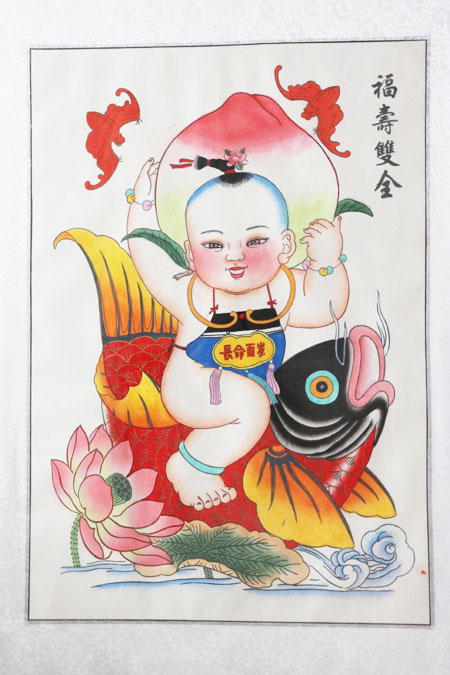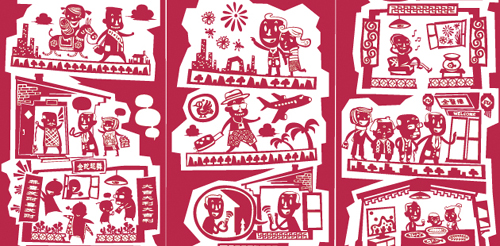
 'Taken 2' grabs movie box office crown
'Taken 2' grabs movie box office crown
 Rihanna's 'Diamonds' tops UK pop chart
Rihanna's 'Diamonds' tops UK pop chart
 Fans get look at vintage Rolling Stones
Fans get look at vintage Rolling Stones
 Celebrities attend Power of Women event
Celebrities attend Power of Women event
 Ang Lee breaks 'every rule' to make unlikely new Life of Pi film
Ang Lee breaks 'every rule' to make unlikely new Life of Pi film
 Rihanna almost thrown out of nightclub
Rihanna almost thrown out of nightclub
 'Dark Knight' wins weekend box office
'Dark Knight' wins weekend box office
 'Total Recall' stars gather in Beverly Hills
'Total Recall' stars gather in Beverly Hills
Traditional New Year paintings still prove popular in some areas
Updated: 2013-02-15 11:12
(China Daily)
|
||||||||
First made more than 500 years ago, the paintings represent expectations of a prosperous life.
During the Spring Festival, Chinese homes are traditionally decorated with nianhua, or New Year paintings.
Although this folk art has seen its popularity wane in modern times, it still survives in some places in China.
In Henan province, the Huaxian woodblock nianhua is named after the place where it's made, Huaxian county in Anyang city. It was first produced more than 500 years ago during the Ming Dynasty (1368-1644), and it was most popular during the Qing Dynasty (1644-1911). In 2008, it was listed as a national intangible cultural heritage.
The Huaxian New Year paintings are rich in content. Most paintings are based on historical stories, religious statues, fairy tales and traditional Chinese operas. People hang them on the walls of their rooms, on their front doors or in their kitchens.
Some of the most popular New Year paintings are the so-called Door Gods, which are pasted on front doors to keep ghosts and evil spirits away. The paintings embody people's expectations of a prosperous life in the New Year.
The Huaxian nianhua paintings are handmade. First, the craftsmen draft an image and engrave that image on a block of wood. They then print out the paintings, which are in black and white. The final step is to colorize the paintings. Craftsmen in Huaxian county retain this traditional production process, which was passed down from their ancestors.
Most Viewed
Editor's Picks

|

|

|

|

|

|
Today's Top News
Boston bombing suspect reported cornered on boat
7.0-magnitude quake hits Sichuan
Cross-talk artist helps to spread the word
'Green' awareness levels drop in Beijing
Palace Museum spruces up
First couple on Time's list of most influential
H7N9 flu transmission studied
Trading channels 'need to broaden'
US Weekly

|

|









